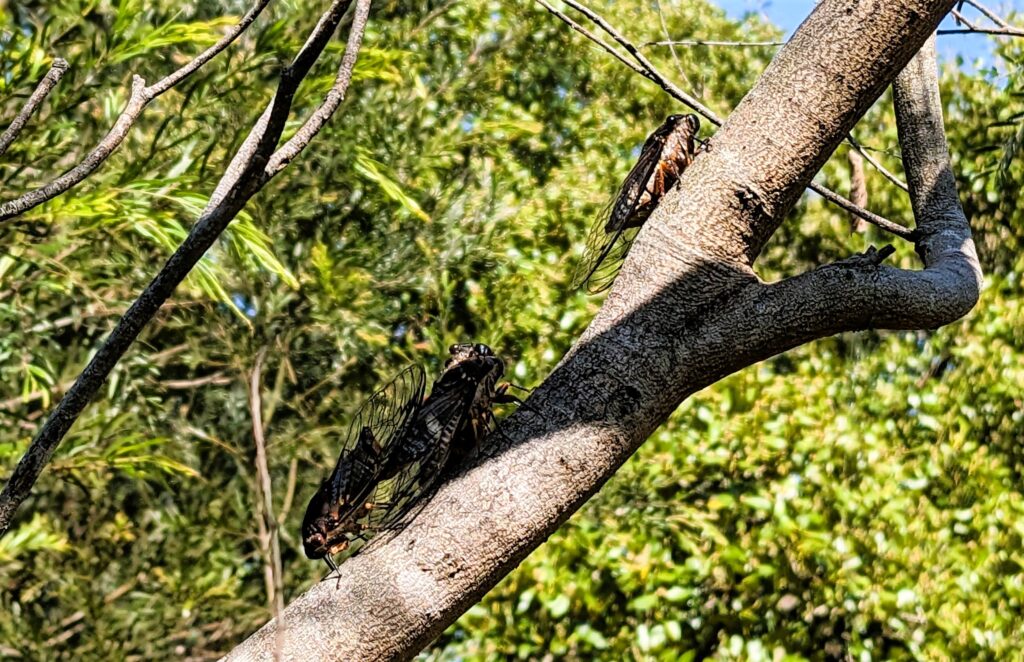The sound of summer has reached my backyard in the last few months with the increase in cicadas. It started with the small species (potentially the Black Squeaker Atrapsalta encaustica), followed the Red Eye Cicada Psaltoda moerens and then the Eastern Double Drummer Thopha saccata. Since then I have been looking every morning to find newly emerged cicadas.


Hundreds of cicadas have now emeged in my backyard creating an extremely loud chorus. This has been making it extremely difficult to identify the different species involved. I have been able to add the Greengrocer Cyclochila australasiae and the Floury Baker Aleeta curvicosta to the chorus.
Cicadas are the loudest insects in the world and emerge from their underground world in late spring and summer. The peak Cicada season is November and December.
Cicadas spend most of their life underground with many large Australian species living underground as nymphs for around 6-7 years. This is why in certain years some species are more abundant than others, there is often peaks every few years.
The life of an adult cicada is very short, lasting only a few weeks. The female cicada lays its eggs by piercing plant stems and inserting the eggs into the slits it has made. The eggs hatch and are small, wingless nymphs. They fall to the ground and burrow below the surface. They live on the sap from plant roots and when the nymph reaches full size it digs its way to the surface. The nymphs then climbs on to a tree trunk or other object and sheds its skin for the last time. The fully-winged adult cicada which emerges leaves its old empty skin behind.

Did you know?
- Australia has an estimated 750 to 1000 species of cicada
- Only male cicadas sing. They do this in an attempt to find a mate.
- Different species have different songs to attract only their own kind.
- Adult cicadas have short lives, usually only a few weeks.
- Most of their lives are spent as nymphs underground. For some species this can be up to several years.
- Cicadas feed only on plant sap using their piercing, sucking mouthparts.
- Cicadas feed on a huge range of plants, including eucalypts and grasses.
- Birds, bats, spiders, wasps, ants, mantids and tree crickets all prey on cicadas.
This is a video I recorded in my backyard in early November 2024
Listen out for the sounds of cicadas and keep an eye out for their exoskeletons on trees, walls, fences and shrubs.
Use this image from David Emery to help you identify some of the common Australian Cicadas.

If you love cicadas too, then follow Cicadarama. They are an Australian-based project focused on learning about the lives of cicadas. They need your help, become a Citizen Scientist and log your Cicada sighting. https://www.cicadarama.com/
Great Cicada Blitz
This project aims to record cicada observations in the greater Sydney Region. The project is being hosted on the iNaturalist website, and anyone can download the free iNaturalist smartphone app to record observations. Photos of specimens and even audio files for recording cicada calls can be attached to observations to identify. It’s all free!
Updated 20/12/2024

